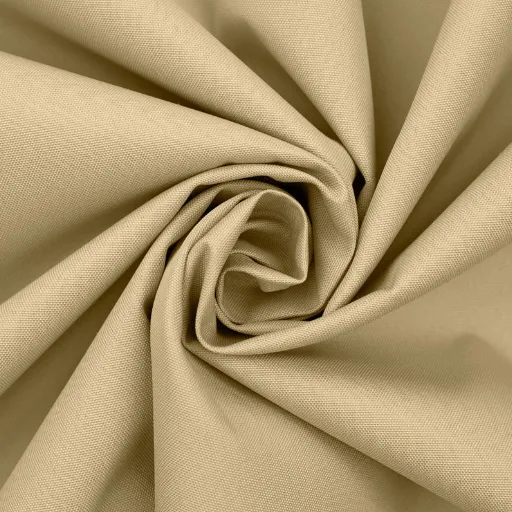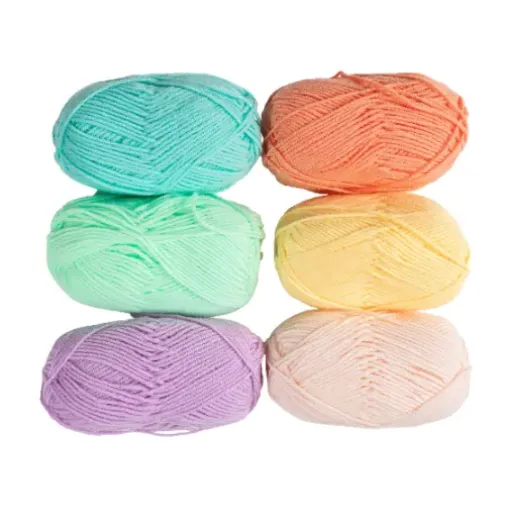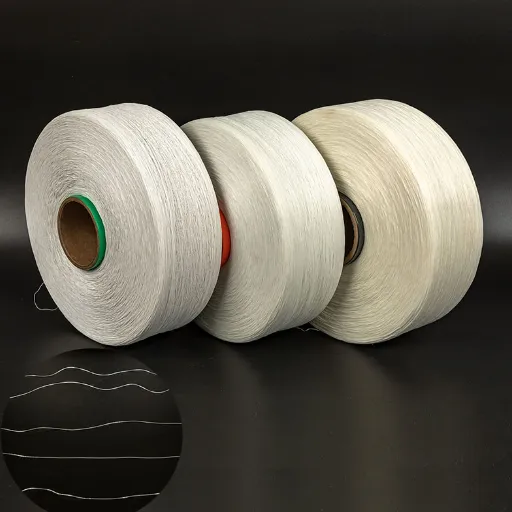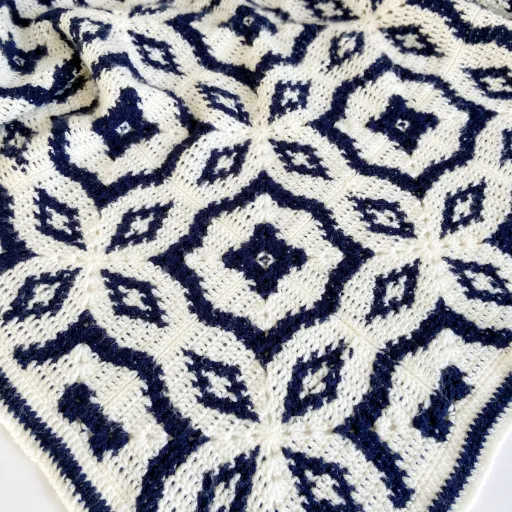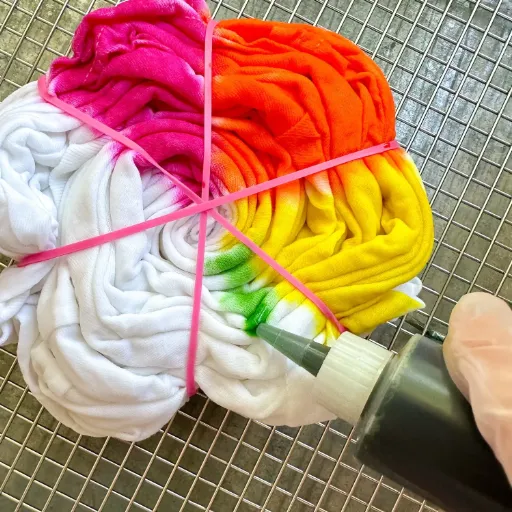Following the softness that natural fibers provide, viscose wool has created a fascinating textile topic that represents sustainable production. With the rise of eco-friendly materials, one now hears about materials combining functionality, comfort, and sustainability from both consumers and producers. But what is viscose fabric, and what could be an enticing option for environmentally conscious developers? We outline the basic story of viscose, its properties, and the opportunities it offers for a greener future in the textile industry. Whether a consumer is interested in sustainable fashion or a brand that prioritizes conscientious choices, this informative guide outlines the benefits and competitiveness of viscose wool.
What is Viscose Wool?
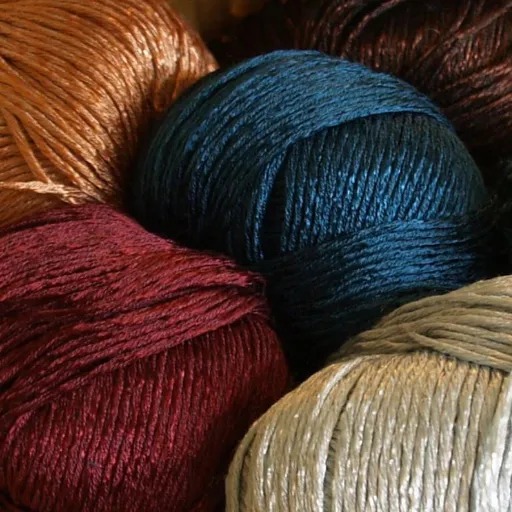
Viscose wool is a fabric created by blending viscose with wool. Here, viscose is a semi-synthetic fiber made from wood pulp. This combination yields a fabric that combines the softness and breathability of viscose with the warmth and durability of wool. Viscose wool has been popular in apparel and textiles due to its comfortable feel, lightness, and ability to retain warmth. Therefore, it finds applications in many different ways. In simpler terms, the production strikes a delicate balance between natural and man-made fibers, providing the optimal combination of comfort and specification required.
Definition of Viscose Wool
Viscose wool is sought after for its unique blend of characteristics derived from natural and semi-synthetic sources. One of the key advantages is that it is smooth and soft, making it comfortable for clothing worn close to the skin. It is also lightweight and has excellent insulating properties, which enable viscose wool garments to be used in various climates. Additionally, the fabric serves as a moisture-wicking material, keeping users dry and comfortable during use. Hi, breathability ensures very minimal discomfort when worn for long hours, whereas the durability of the material ensures it can be worn for longer without deterioration. All these attributes qualify it as one of the popular fibers in the textile industry.
How Viscose is Made
Manufacturing viscose is a complex process, as it begins with cellulose, typically derived from wood pulp. The cellulose is first treated with chemicals, such as sodium hydroxide, to form alkali cellulose. This is aged, then mixed with carbon disulfide to form cellulose xanthate, which is subsequently dissolved in sodium hydroxide to yield a viscous solution. It is from this solution that the name “viscose” is derived. The solution is filtered, de-aerated, and extruded through spinnerets into the acid bath, where the cellulose is regenerated into fibers from which yarns can be spun or fabrics woven. This method of manufacture allows for varying the texture and strength properties that characterize viscose as a material used in fashion, upholstery, and other fields. However, this step must be taken with great care to prevent environmental impacts from certain chemicals used. If such impacts do occur, the substances should be treated or recycled in a manner that is appropriate.
Common Applications of Viscose Wool
This fabric is highly valued for its exceptional versatility and adaptability across a wide range of industrial applications. It is generally blended with natural fibers, such as wool or cotton, to render the fabric softer, more durable, and more economical. The fashionable use of viscose wool is primarily seen in light knitwear, scarves, and tailored clothing, where a soft yet sturdy cloth is required. Other uses of it include home textiles, such as upholstery, curtains, and bedding, where it offers a luxurious texture at an affordable price. Its breathability and moisture-wicking qualities also make it suitable for activewear and underwear fabrics. Finally, its versatility is an indication of the high relevance it enjoys in the direction of textile innovation.
Properties of Viscose Wool

- •
Soft Texture: Viscose wool is considered very smooth and silky, making it comfortable to wear and suitable for a wide range of applications. - •
Breathability: It allows air to pass through it effectively, ensuring comfort in various climates. - •
Moisture-Wicking: The fabric absorbs and releases moisture quickly, keeping it completely dry and comfortable. - •
Versatility: This viscose wool is versatile enough to be used for both garment-making and home textiles. - •
Durability: It maintains its strength, remaining resilient, for long life. - •
Luxurious Appearance: It glows with its silky shine yet is the most affordable of all.
Key Characteristics of Viscose
Attributes that made viscose a popular choice:
Softness and Comfort:
Viscose is soft and silky, making it an ideal material for garments that require gentle touch on the skin.
Breathability:
Viscose is highly breathable, allowing the body to maintain a normal temperature by permitting sweat and air to travel up and out. The greater the climate warmth, the better they will be able to wear it.
Eco-Friendly Origin:
Although it is not entirely sustainable, viscose is manufactured from regenerated cellulose, primarily wood pulp, and is therefore a more natural option compared to most synthetic fibers.
Customizability:
Viscose floods in brilliant, fast colors, presenting numerous opportunities for various applications in fashion and home design.
Affordable Luxury:
The sleek appearance and elegant draping resemble those of delicate fabrics, such as silk, at a fraction of the cost.
These features, plus the acceptable compromise of comfort, price, and style, explain the impact of the name in several sectors. While the newness of greener manufacturing steadily makes strides in reducing its environmental impact, it is now a household name in the textile industry.
Comparison with Other Fibers: Wool, Cotton, and Polyester
In contrast to wool, cotton, and polyester, viscose fiber combinations each grant their own properties that satisfy one need or the other.
Wool:
Wool has its uses in keeping warm and insulating, making it the ideal choice for cold-weather clothing. Comparing it to viscose, which is weightless and pleasant to the touch against the skin, wool remains somewhat heavy and exhibits some natural stretch. Viscose does win, though, as it provides more options for styling and is cheaper, making it convenient for all-around fashion.
Cotton and viscose:
Both will provide softness with an airy texture, making you feel comfortable. In essence, the difference lies in the origin of each fiber: cotton is a natural fiber derived from the cotton plant, while viscose is semi-anthropogenic, arising from cellulose or wood pulp. Cotton may be more durable and environmentally sound, especially when it is organic. On the other hand, viscose offers the hand feel of silk and drapes more smoothly, making it a favorable choice for evening dresses.
Polyester:
Polyester is a synthetic fabric known for its durability, moisture resistance, and exceptional wrinkle resistance among all other fibers. Viscose is considered more breathable and luxurious to the touch when compared to natural fibers; however, polyester is the ultimate winner when it comes to longevity and comfort of care. Viscose, on the other hand, is typically preferred for its softness and somewhat natural appearance.
Each type of fiber has its own set of services to offer, and based on that, the final decision is made, taking into account the aesthetics, usefulness, or environmental considerations.
Durability and Breathability of Viscose Blends
Viscose blends elegantly combine the qualities of viscose and the special qualities of another fiber, enhancing utility and multi-functionality. Blended with tougher fibers like polyester or nylon, the fabric is a strong contender for durability, capable of withstanding several wear and washes while maintaining softness. Provided by nature, viscose is an excellent channel for air; hence, viscose blends are great options for clothing in extremely hot weather. This breathability is retained even when combined with synthetic fiber, thus posing a comfort-resilience balance. For the whole range of clothing and home textiles, an adaptable solution is provided through viscose blends.
Uses of Viscose Wool
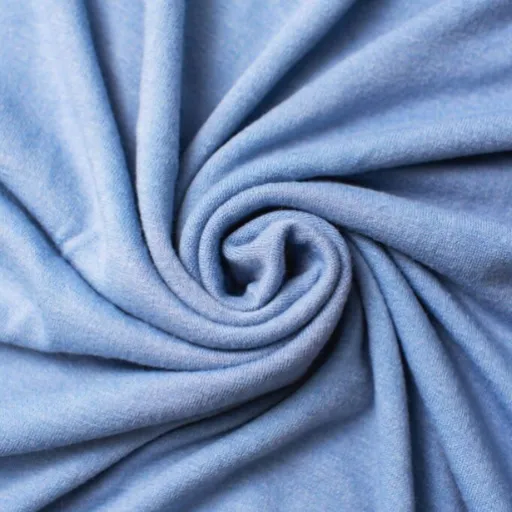
Viscose wool is best suited for a wide range of clothing and home textiles, thanks to its softness, breathability, and versatility. Typical usages are:
- Apparel:
Sweaters, scarves, and socks that are warm yet feel light. - Home Textiles:
Cozy blankets, upholstery, and decorative cushions for added comfort. - Blended Fabrics:
Often blended with one or more fibers to improve durability and maintain softness.
That adaptability lends itself well to seasonal and day-to-day applications.
Fashion Applications of Viscose Yarn
The viscose yarn, over time, has instead carved itself into the warp and weft of the fashion industry, imparting mass splendor and functionality. It has a silky smooth surface for some and is commonly used in exquisite evening wear and airy, glimmering summer dresses, creating an airy glow with flowing gossamer drapes. It offers excellent draping properties and is therefore suitable for dressing garments with a soft silhouette. The good part about the fabric is that it absorbs moisture and keeps the skin dry, making it a surprisingly good choice for both active wear and everyday use. Designers and manufacturers also appreciate the flexibility of colors offered by their dyeing capabilities, as they accept bold colors and prints. While manufacturers are working hard to go green with this type of textile yarn, newer production techniques with a reduced ecological footprint also add glamour to the latest textile innovations.
Home Textiles: Benefits of Viscose Fabric
The viscose fabric provides a myriad of solutions to the needs posed by home textiles, thereby making it almost a preferred choice for bedsheets, pillowcases, curtains, and upholstery. Being soft and silky, viscose fabric lends a very luxurious feel, so much so that it competes with silk in terms of textural variance, yet it is far more affordable. Viscose ensures more air circulation for comfortable use in summer climates, providing adequate breathability. On another note, its moisture-wicking ability helps maintain freshness, counteracting moisture. Being great at retaining brighter colors also helps enhance any interior, as the fabric easily holds interesting patterns and colors. Backed by greener approaches introduced in the manufacturing process, the viscose fabric remains a green and trendy choice for home textiles today.
Industrial Applications of Viscose Wool
Due to its unique properties of softness and breathability, viscose wool is widely used in various industries. First and foremost, in the textile industry, it finds application in the manufacture of the finest garments, upholstery, and decorative fabrics. A blend of viscose and wool yields extremely light yet durable materials, making them comfortable for both fashion and the home all year round. Additionally, in the automotive sector, viscose wool is used for lining and seat-covering applications, offering an acceptable yet workable choice. The ability to perform with bright dyes and intricate designs also makes it worthwhile in industrial-grade fabrics with special functions, such as uniform manufacture and protective clothing.
Sustainability and Environmental Impact
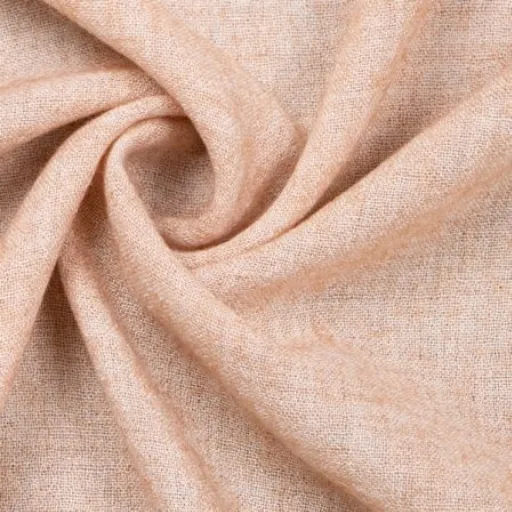
Viscose wool is said to be different in that environmental benefits could be present when the fiber and fabric production are done responsibly. Being made from natural fibers, it is biodegradable; therefore, it will decay much more quickly in the environment compared to most synthetic alternatives that contribute to long-term environmental waste. However, the actual ecological impact remains contingent upon the treatment processes used, the chemicals used, and even the energy consumed. From a sustainable perspective, these practices should ensure water and chemical reductions, alongside the ethical sourcing of materials. Thus, vigilance in the manufacturing process and the supply chain must guarantee a clear ecological improvement for this fiber.
Sustainability of Viscose Production
The sustainability of viscose production depends on solving the core challenges while capitalizing on emerging opportunities. One primary concern is the sourcing of raw materials, as viscose production usually involves obtaining wood pulp from forests. Unsustainable logging practices could contribute to deforestation and habitat loss. Recent initiatives, such as FSC (Forest Stewardship Council) certification, ensure that wood used in viscose production originates from responsibly managed forests, which partially mitigate environmental harms.
The next challenge is the actual chemical processes involved in viscose manufacture, chiefly carbon disulfide and sodium hydroxide. These chemicals can be highly hazardous if not handled properly by workers and the environment. However, modern processes known as closed-loop production systems enable the recovery and recycling of these dangerous chemicals, making green production a reality. Any company willing to invest in such a technology will reap the benefits of significantly reduced emissions and waste.
Lastly, the massive changes in consumer preferences towards ethically produced and sustainable products provide enormous opportunities for the viscose industry. With improved transparency, sustainable practices, and various certifications, such as OEKO-TEX certification and the EU Ecolabel, manufacturers can begin to rebrand their products as a green choice. In tandem with these measures, ongoing innovation is essential if viscose production is to become increasingly sustainable while meeting global market demands.
Environmental Concerns Related to Viscose
The production of viscose poses numerous environmental concerns that demand attention. One of the most prevalent issues is the chemical-intensive process of extracting cellulose from wood pulp. Chemicals such as carbon disulfide, sodium hydroxide, and sulfuric acid are commonly used, and their improper handling or disposal can lead to land and water pollution. Viscose production also heavily depends on wood sourced from forests, and if these forests are not managed sustainably, deforestation and loss of biodiversity will occur. The problem becomes severe given that the demand for viscose worldwide continues to increase, putting more pressure on natural resources. Additionally, there are other concerns, such as the greenhouse gas emissions generated by energy use in the production of viscose, which further exacerbate climate change. Tackling such issues requires broader strategies, such as implementing stricter regulations, adopting cleaner technologies, and implementing recycling initiatives to mitigate the ecological impact of viscose production.
Future Innovations in Viscose Production
Given the urgency of environmental issues associated with viscose manufacturing, various hopeful innovations are being presented. One such critical advancement has been the development of closed-loop manufacturing systems, an invention designed to recover and reuse chemicals and water used in manufacturing processes, thereby reducing waste and pollution. Another set of technologies is being evaluated as alternatives to raw materials, such as agricultural waste or microbial cellulose, which could help diminish dependency on wood pulp and address deforestation issues. The operation of production plants using renewable energy presents another opportunity to reduce greenhouse gas emissions. Thus, by incorporating these technologies and processes, the industry can lay the groundwork for a more environmentally friendly future and meet the global demands for viscose.
Practical Advice for Consumers
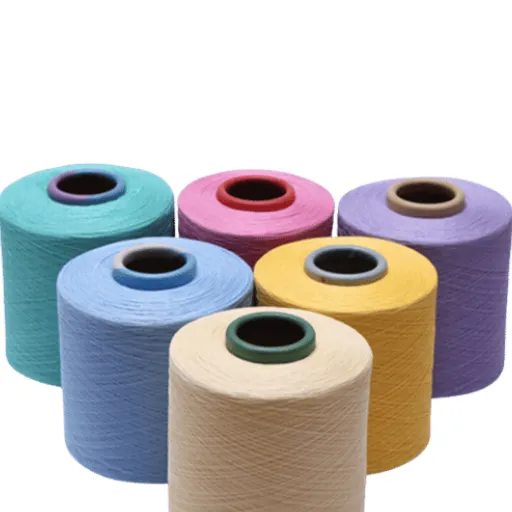
- 1
Choose eco-friendly brands: Opt for those that utilize sustainably sourced materials, such as certified viscose or alternatives like lyocell, which have minimal adverse environmental impacts. - 2
Check certifications: Look for products with certifications such as FSC (Forest Stewardship Council) or OEKO-TEX, as these indicate responsible sourcing methods and safer manufacturing practices. - 3
Limit consumption: The idea is to practice mindful shopping by purchasing only what you really need and opting for high-quality, durable items that can last a long time. - 4
Support transparency: Choose companies that are transparent about their supply chain and environmental commitments. - 5
Consider secondhand options: Buying secondhand clothes helps reduce demand for new viscose manufacturing and prolongs the life of existing materials.
How to Choose Viscose Wool Products
When evaluating viscose wool items, sustainability, quality, and comfort must all be high priorities. Consider these critical factors:
Check Certifications:
Ensure that you look for certifications issued by OEKO-TEX or the FSC (Forest Stewardship Council), as these indicate the responsible sourcing of viscose, taking into account environmental standards.
Inspect Material Blends:
Ensure the viscose is blended with high-quality wool for enhanced durability and a softer texture. Do not opt for blends with significant amounts of synthetic fibers, as such would rather hamper breathability.
Review Manufacturer Practices:
Try to determine whether the brands adhere to ethical production processes, from sustainable dyeing methods to labor rights, in the production of viscose wool.
Consider Durability:
Evaluate product reviews and the construction itself to determine if the item is durable enough to withstand actual use and maintain its shape over time.
Opt for Timeless Designs:
Select styles that can be versatile across seasons, allowing you to purchase fewer items.
Evaluate Price and Value:
Being priced higher upfront may only be a facade for sustainable viscose wool products, as their quality and durability often make the investment worthwhile in the long run.
Keeping these in mind will help you choose precious and ethically made viscose wool items that promote sustainable practices.
Care Tips for Viscose Fabric
When working with viscose, it should always be gently washed, preferably by hand or on a delicate machine cycle set to a cold temperature. A mild detergent should be used to prevent damage to the fabric. Do not wring viscose or it will stretch and distort the fabric. To dry, viscose should be laid flat on a clean, dry surface, avoiding direct sunlight. Ironing may be done on a low setting on the wrong side if necessary. This is how I keep my viscose garments in good condition for years.
When to Choose Viscose Wool
It is an excellent fabric due to its softness, breathability, and versatility. During transitional seasons, such as spring and fall, a viscose wool blend is a lightweight source of warmth that feels comfortable against the skin and makes the perfect layering garment. It, therefore, sits nicely in the class of arts that require an exceptional drape from the fabric: dresses, blouses, stretch knits, and semi-casual attire alike. Viscose wool is excellent for everyday elegance and choice because it does not cling to static and maintains bright colors. When you need a fabric that combines comfort, style, and functionality while maintaining durability, consider viscose wool.
Reference Sources
Here are three professional and authoritative reference sources that you can use to verify the correctness of your article on “is viscose wool”:
- “The Historical Development of and the Outlook for Viscose Fibres”
Published by Taylor & Francis Online, the article provides a comprehensive overview of the developments and applications of viscose fibers, including their use as substitutes for natural fibers such as wool.
- “Enzymatic Modification of Cotton/Wool and Viscose/Wool Blended Fabrics”
The study provided information on the performance and application of viscose/wool blended fabrics, including their properties and treatment. The study was published in Taylor & Francis Online.
- “Spinning a Good Yarn: The Identification of Core Competencies at Courtaulds”
The study has found the development of viscose staple fibers and their significance in replacing cotton and wool in textiles, as published in the Inderscience Online Journal.
Frequently Asked Questions (FAQs)
What is viscose wool?
Viscose wool is a blend of viscose, a type of rayon made from regenerated cellulose, and wool fibers. This combination aims to leverage the softness and breathability of viscose along with the warmth and durability of wool, creating a unique textile suitable for various clothing items.
How is viscose made?
Viscose is derived from natural sources, including bamboo, beech, and eucalyptus. The production process involves dissolving cellulose from these materials to create a viscose solution, which is then spun into yarn or woven into fabric. This process gives viscose its characteristic softness and drape.
What are the benefits of viscose yarn?
Viscose yarn offers several benefits, including excellent breathability, moisture absorption, and a soft texture that feels comfortable against the skin. Additionally, it can absorb dyes well, allowing for vibrant colors in the final product. Viscose can also be a sustainable alternative when sourced from sustainable wood.
Is viscose biodegradable?
Yes, viscose is biodegradable, making it an environmentally friendly choice compared to synthetic fibers like polyester. When disposed of, viscose can break down naturally, reducing its environmental impact.
What are the characteristics of viscose fabric?
Viscose fabric is known for its softness, drape, and breathability. It can mimic the feel of natural fibers, such as cotton and silk, making it a popular choice for warm-weather clothing. Viscose fabric is often used in dresses, blouses, and other garments where a comfortable fit is desired.
How does viscose compare to wool?
While both viscose and wool have their unique properties, viscose is typically softer and more breathable, making it suitable for warm weather. Wool, on the other hand, is known for its insulation and durability. Blending these fibers can result in fabrics that leverage the strengths of both materials.
What are the uses of viscose yarn?
Viscose yarn is utilized in various applications, including knitting and weaving into fabrics for clothing, home textiles, and accessories. Its ability to absorb dyes and its soft texture make it ideal for vibrant and comfortable garments.
Can viscose be spun into yarn for knitting?
Yes, viscose can be spun into yarn that can be used for knitting or woven into viscose rayon fabric. This versatility allows designers and manufacturers to create a wide range of products that benefit from the properties of viscose.
What is the environmental impact of viscose production?
The environmental impact of viscose production can vary significantly depending on the sourcing of raw materials and the production practices employed. Sustainable viscose production utilizes wood from sustainably managed forests and minimizes the use of harmful chemicals, resulting in a lower environmental footprint compared to conventional viscose production.









